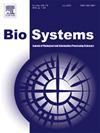Grounding information in thermodynamics and the ungroundedness of language: A missing aspect of anthropogenesis
IF 1.9
4区 生物学
Q2 BIOLOGY
引用次数: 0
Abstract
Standard information theory explicitly excludes an account of reference (“aboutness”) and normativity (significance or “usefulness”). These are fundamental defining properties of the concept of ‘information’ as it is generally understood. Their elision from the formal theory creates a conceptual gap, limiting the scope of its use in biological and cognitive contexts. This essay summarizes a framework for bridging this gap by showing how the referential and normative aspects of information are ultimately expressions of the thermodynamic relationship between an information-conveying medium and its physical context. This requires deconstructing the information concept into a nested hierarchy of three related concepts (structural, referential, and normative information) in which its referential and normative dimensions are fundamentally linked to, and measurable through, the concept of thermodynamic work. Once this interdependence is recognized, the potential physical efficacy of information and its empirical groundedness in the world no longer appear mysterious. Understanding the physicality of these semiotic properties additionally provides a perspective from which to make sense of the unique capacity of human language, which, despite being conveyed by intrinsically ungrounded “arbitrary” symbols, is nevertheless capable of almost unlimited referential capacity.
热力学中的基础信息与语言的不基础:人类形成的缺失方面。
标准信息论明确排除了参考(“关于性”)和规范性(重要性或“有用性”)。这些是定义“信息”概念的基本属性,因为它通常被理解。他们对形式理论的省略造成了概念上的差距,限制了其在生物学和认知环境中的使用范围。本文通过展示信息的参考和规范方面如何最终表达信息传递媒介与其物理环境之间的热力学关系,总结了一个弥合这一差距的框架。这需要将信息概念解构为三个相关概念(结构信息、参考信息和规范信息)的嵌套层次结构,其中参考和规范维度与热力学功的概念基本相连,并通过热力学功的概念进行测量。一旦认识到这种相互依存关系,信息的潜在物理功效及其在世界上的经验基础就不再显得神秘。理解这些符号学属性的物质性,也为理解人类语言的独特能力提供了一个视角,尽管人类语言是由本质上没有根据的“任意”符号传达的,但它却具有几乎无限的参考能力。
本文章由计算机程序翻译,如有差异,请以英文原文为准。
求助全文
约1分钟内获得全文
求助全文
来源期刊

Biosystems
生物-生物学
CiteScore
3.70
自引率
18.80%
发文量
129
审稿时长
34 days
期刊介绍:
BioSystems encourages experimental, computational, and theoretical articles that link biology, evolutionary thinking, and the information processing sciences. The link areas form a circle that encompasses the fundamental nature of biological information processing, computational modeling of complex biological systems, evolutionary models of computation, the application of biological principles to the design of novel computing systems, and the use of biomolecular materials to synthesize artificial systems that capture essential principles of natural biological information processing.
 求助内容:
求助内容: 应助结果提醒方式:
应助结果提醒方式:


